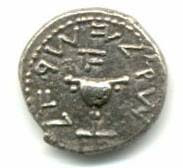So I went over to DCT this morning, filled out their paperwork (and still have even more to do), gave them a copy of the requisite documents and then got introduced to an instructor.
They definitely do things differently at DCT - quite organized, planes are hangared and they don't want the students putting the oil in the planes and we shouldn't have to call for fuel as they will take care of it and make sure the plane is ready before the lesson -- which is quite a difference. Even more of a difference, their training is in stages and its all documented and checked on by the head instructor.
Unfortunately this stages approach will likely cause some issues with me as I've actually already done all the requirements and just need to get all the maneuvers and landings to ACS standards.....
I was introduced by the operations manager to Ray (not the prior Ray) and we had a ground session as they want to know where I am in my flying and to get an idea of some of their procedures. So, no flying today. Instead, we went over the standard private pilot oral questions on which I did quite well - airspace, systems (changing for the fact the Piper is fuel pump rather than gravity fed) and he was impressed I had already read up on the Archer and knew the total and usable fuel numbers, and that I was pretty good on the knowledge needed for the oral portion of the checkride).
DCT does things with a bit of a different philosophy and consistency between instructors which may very well be a nice thing. They are however pretty regimented and go by flow checklists of which I got a copy to be memorized. The different way of doing things is reflected in other areas - for example, they do not do touch and goes, only full stop taxi backs. They do have JPI edm700 engine monitors in each plane and they expect you to lean to rich of peak using it once you get to 500 feet AGL. The edm700 looks like an interesting bit of kit, integrated with the Garmin 430 and with fuel flow can pretty accurately tell you not just your cylinder head and exhaust gas temperatures but also what your fuel remaining is, quite a contrast to the not so well functioning (as in accurate only when empty) gauges on the Flight 101's C172s.
Actual flying lesson now booked for Sunday.
This will either turn out to be a good decision or a very bad one. Likelihood of exceeding twice the average hours to get a private pilot's license exceeds 99% at this point.

1 comment:
On the plus side, when you pass your FAA checkride, you'll have about enough hours to roll right into Instrument training.
Post a Comment